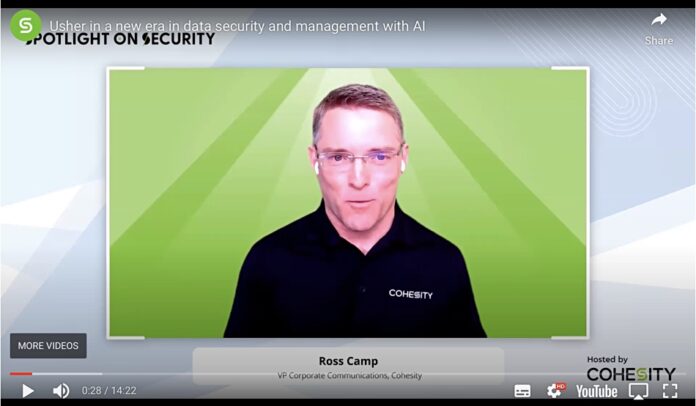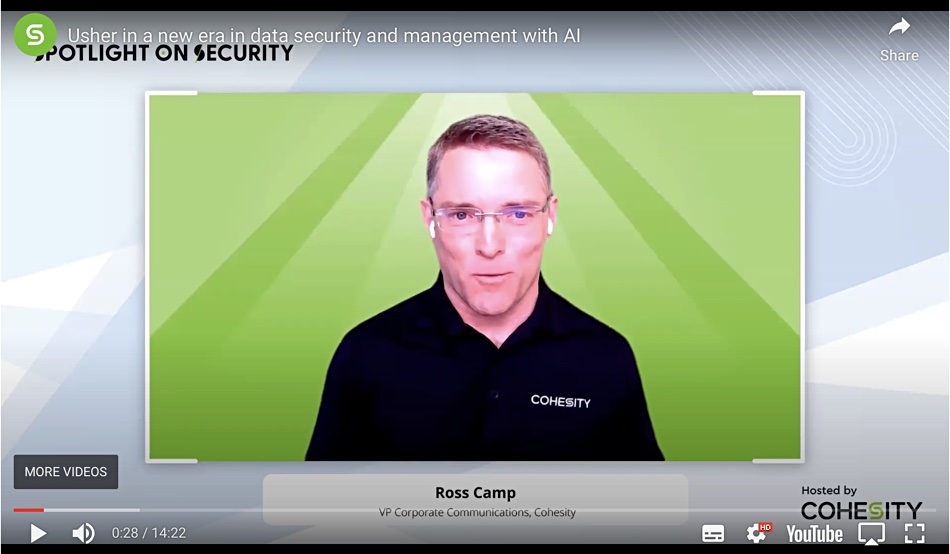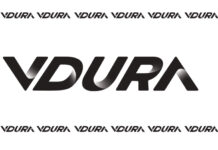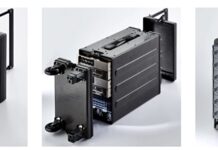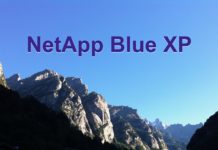Cohesity has unveiled a boosted Google Cloud partnership for large language model (LLM) access, added to its own AI technologies to improve LLM execution, and detailed an expanded Data Security Alliance.
The three-pronged announcement came at Cohesity’s three-day Catalyst virtual conference. The Google Cloud Platform (GCP) element is focused on using generative AI to investigate an organization’s entire data contents better by integrating Cohesity’s Data Cloud offering with GCP’s Vertex AI.

Cohesity CEO and president Sanjay Poonen, said: “To apply generative AI transformatively, businesses need to be able to easily get rapid insights from their data utilizing cutting-edge and leading AI/ML models.”
Google, which announced its Palm 2 LLM at Google IO earlier this month, can help supply them.
Google Cloud CEO Thomas Kurian said: “Vertex AI is one of the best platforms for building, deploying, managing and scaling ML models – and we’re excited that Cohesity is joining our growing open ecosystem to help more customers get value from their data via AI. Cohesity’s excellent data security and management capabilities, combined with Google Cloud’s powerful generative AI and analytics capabilities, will help customers get exceptional insights into their backup and archived data.”
GCP’s Vertex AI Workbench is a set of services for creating AI/ML models. It’s a platform or framework for data scientists to deploy machine learning models, ingest data, and analyze the results through a dashboard. Users with different AI/ML experience levels have access to a common toolset across data analytics, data science, and machine learning.
Cohesity and Google reckon that their joint customers will be able to get “human readable” insights into the data they’re securing and managing on Cohesity’s platform. Poonen claimed Cohesity “provides phenomenal search via our built-in indexing capabilities,” and has robust security protocols to keep the data private. Chatbots will provide a simpler way to search through Cohesity content.
Cohesity Turing and RAG
Turing is Cohesity’s own set of of non-generative AI/ML capabilities and technologies that are integrated into its Data Cloud. They include:
- Ransomware anomaly detection: Uses modeling and data entropy detection to “see” anomalies in data ingested, which can provide early warnings of a hidden threat.
- Threat intelligence: Provides curated and managed threat feeds used in conjunction with machine learning models to detect threats.
- Data classification: Helps ensure that organizations can identify their most sensitive data and its location.
- Predictive capacity planning: Forecasting capacity utilization based on previous capacity utilization and including a what-if simulator.
Cohesity is adding Retrieval Augmented Generation (RAG) AI model workflows to Turing, which it says can help customers get deeper insights and discovery from data or find content in petabytes of data faster. It has filed a patent application in this area. A Cohesity blog says RAG enables LLMs to generate more knowledgeable, diverse, and relevant responses and is a more efficient approach to fine-tuning such models.
Cohesity is not developing its own LLM. Instead it wants to make LLMs more efficient when looking into Cohesity datasets. Think faster, better, super-charged search. Poonen has talked to Microsoft about this. A video helps set the RAG scene:
The blog says: “The retrieval-augmented response generation platform under development by Cohesity accepts a user or machine driven input – such as a question, or a query. That input is then tokenized with some keywords extracted that are used to filter the petabytes of an enterprise’s backup data to filter down to a smaller subset of data. It then selects representations from within those documents or objects that are most relevant to the user or machine query. That result is packaged, along with the original query, to the Language Model (such as GPT4) to provide a context-aware answer. This innovative approach ensures that the generated responses are not only knowledgeable but also diverse and relevant to the enterprise’s domain-specific content.”
Specifically: “By using RAG on top of an enterprise’s own dataset, a customer will not need to perform costly fine-tuning or initial training to teach the Language Models ‘what’ to say. … Leveraging RAG always provides the most recent and relevant context to any query.”
Cohesity RAG should be available in the near-future but no specific date was given.
DSA developments
Cohesity DSA members include BigID, Cisco, CyberArk, Mandiant, Okta, Palo Alto Networks, PwC UK, Qualys, Securonix, and Splunk. The latest new members are Netskope, ServiceNow, and Zscaler. Cohesity has delivered new integrations with ServiceNow and an updated integration with Tenable.
- ServiceNow: ServiceNow Security Operations provides closed-loop detection and response for ransomware attacks via SOAR (Security Orchestration, Automation, and Response) integration to create workflows through their IT service management (ITSM) offering. Customers can access and address threats based on the potential impact to the business.
- Tenable: The updated Tenable integration provides improved scalability so that snapshots can be scanned rapidly and improved vulnerability scanning used proactively, as part of cyber resilience best practices. Tenable powers Cohesity’s CyberScan capability.


